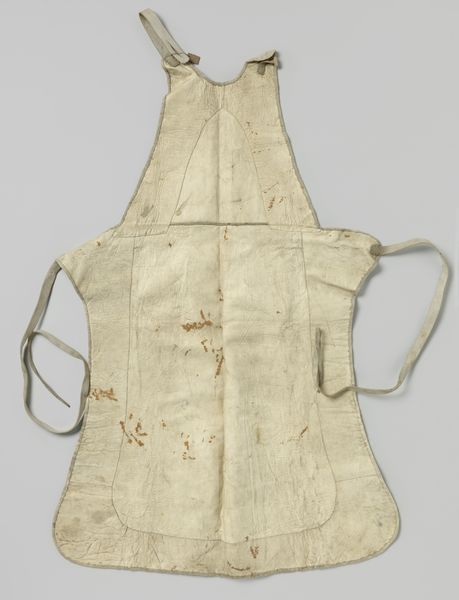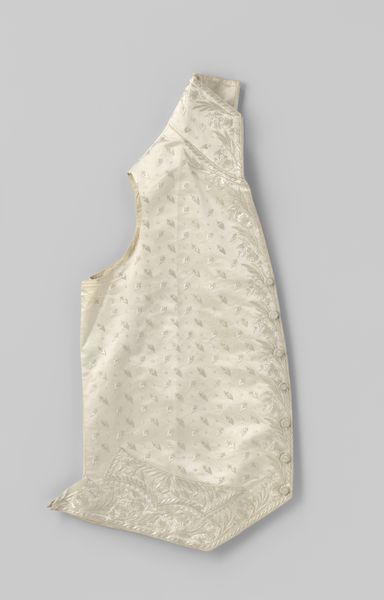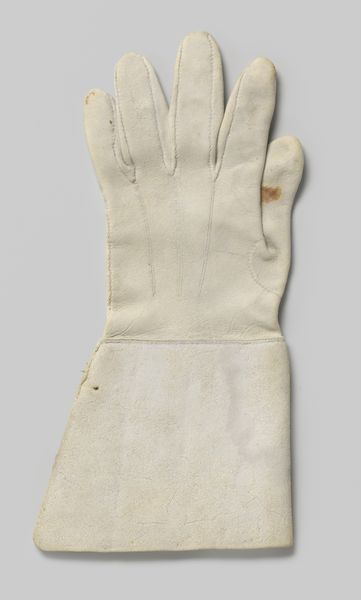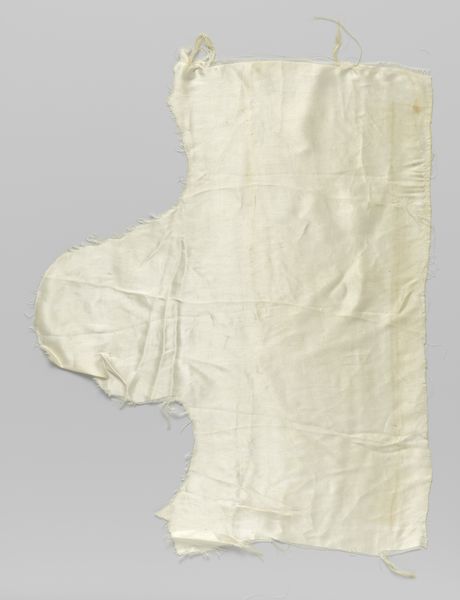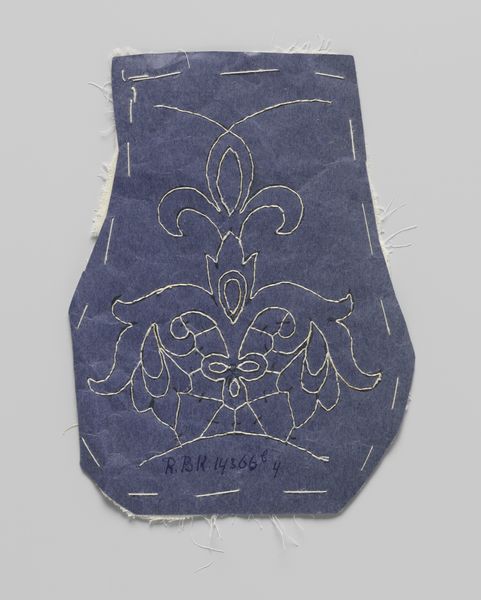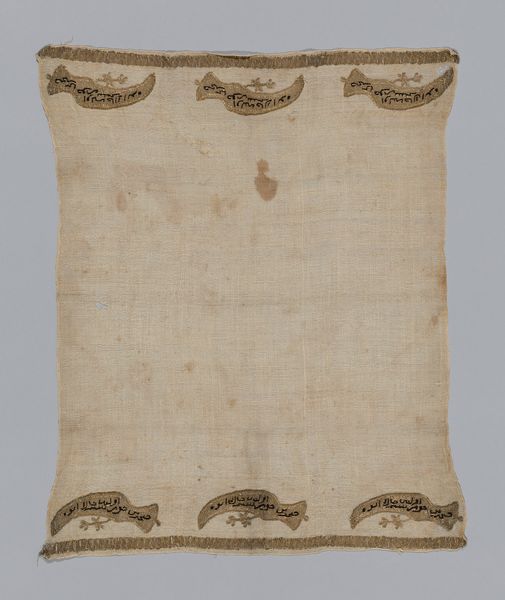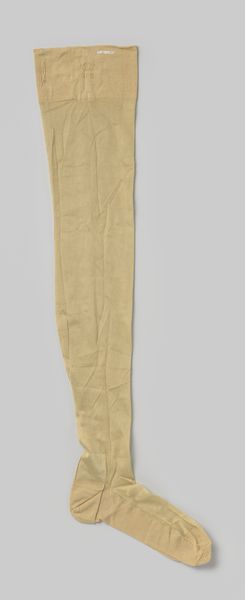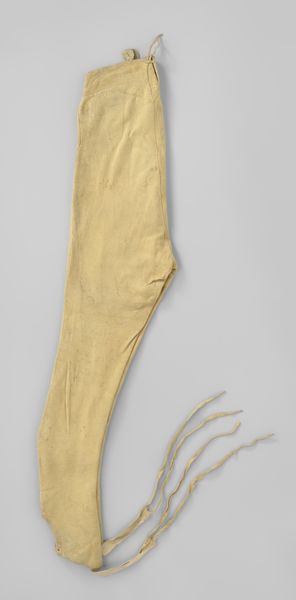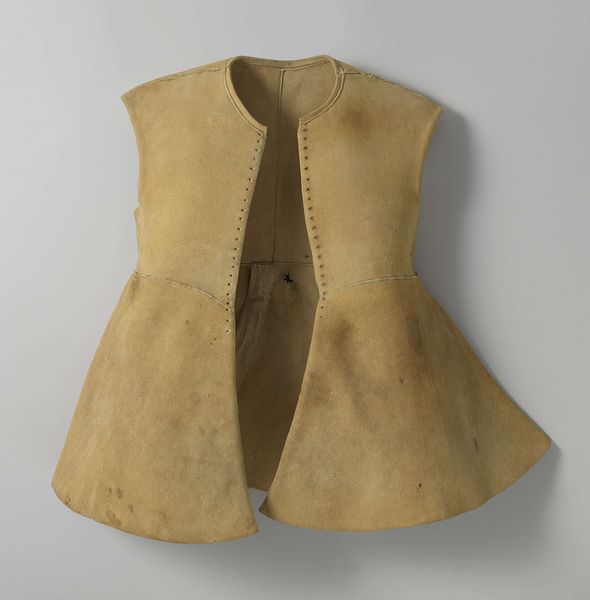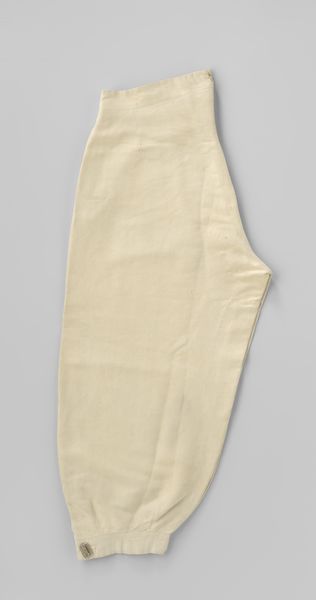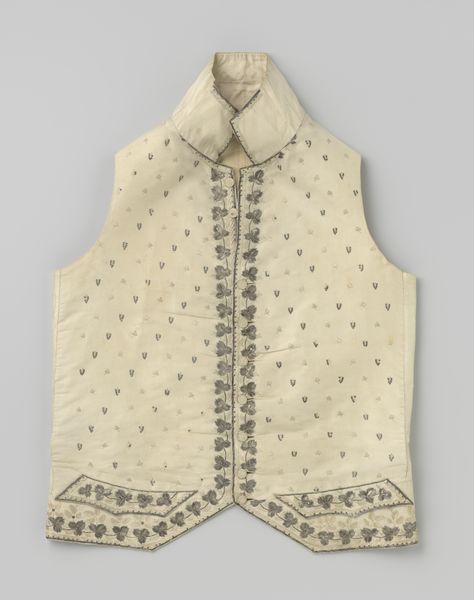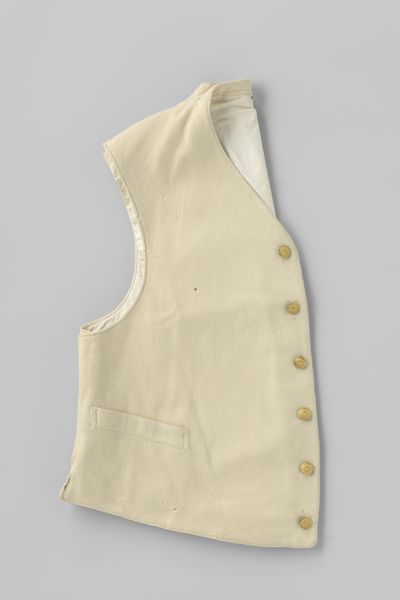
Leren schootsvel behorend tot de uitrusting van een sappeur van de 1e Afdeling Noord-Hollandse Schutterij c. 1800 - 1830
0:00
0:00
anonymous
Rijksmuseum
fibre-art, textile
#
fashion design
#
underwear fashion design
#
fibre-art
#
fashion mockup
#
textile
#
fashion and textile design
#
hand-embroidered
#
fashion based
#
wearable design
#
clothing photo
#
fashion sketch
#
clothing design
Dimensions: length 115 cm, width 70 cm
Copyright: Rijks Museum: Open Domain
Editor: This is a leather apron, dating from about 1800 to 1830. It’s called “Leren schootsvel behorend tot de uitrusting van een sappeur van de 1e Afdeling Noord-Hollandse Schutterij”, made by an anonymous artist. I find it interesting that something so utilitarian is in an art museum. What stands out to you about this piece? Curator: Well, on one level it's just protective gear. But, looking at this apron, I’m drawn to consider labor, class, and the role of the individual within a larger political structure. Sappers, traditionally, performed essential but dangerous tasks - think of digging trenches, dismantling fortifications. The relative anonymity of the maker is very telling – the focus was function, the collective effort. Who made this apron? How does the object reify social divisions and labor practices in the early 19th century Netherlands? Editor: So you’re thinking about the historical context of who would have worn it and what their life was like. Does the apron’s material also inform how you see the context? Curator: Precisely! Leather isn’t a cheap material, suggesting a degree of state investment, and likely social importance placed on these particular individuals and their contributions to military campaigns. Yet it also implies a gendered division of labor - even protective clothing wasn't considered and designed for all bodies. Moreover, examining its wear and tear could potentially give us insight into its function. What kind of labour has impacted this object? How can we begin to read an archive of impact into its use? Editor: I hadn’t considered how gender plays into work and clothing, especially military gear! This makes me see the apron as more than just an object – almost like a primary source document that you could learn a lot about early 19th century society from. Curator: Exactly! Approaching these materials from an intersectional lens allows a closer understanding not only of the wearer, but of their context and labour. It's not just a piece of clothing; it reflects a whole world.
Comments
No comments
Be the first to comment and join the conversation on the ultimate creative platform.

